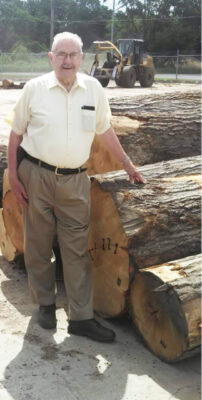Quebec Business Trends 2025 – Mixed, Volatile Market Has Lumber Industry On Cautious Watch
Contacts reported mixed business sales levels; some reported sales as fair, others slow, while others are struggling. Red Oak shipments to China are still low, and so Red Oak inventories are low, suggesting the main concern is still trade uncertainties.
Upper grades of Ash are reported to be moving well, with No. 1 Common business stable, while No. 2A sales are slow, commented some contacts. Production of green Ash is meeting demand. Basswood demand is not strong at this time.
Cherry export activity is reported as stronger, and suppliers’ inventories edged lower.
Hickory continues to be moving well to flooring manufacturing plants, while some sellers are struggling to sell this species. Kiln-dried markets are slow and production has been reduced for some time; supplies are aligned with demand.
The regionally important Hard Maple demand is higher for No. 1 Common now than for FAS, with stronger sales being experienced for green No. 1 and 2, and for White No. 1 Common being purchased by the cabinet manufacturing sector. Some have also reported a shortage of kiln-dried No. 1 Common.
Market conditions for Soft Maple are reported as good for kiln-dried Sap and Better FAS and No. 1 Common, with little interest shown for No. 2A. Sales for color sorted material are lower at this time, noted sellers.
Residential flooring manufacturers are seeking more Red Oak to boost production as sawmill production did not increase over the summer. There is competition for certain grades from truck trailer manufacturers for this species. It is difficult to maintain inventories for both these groups at this time. Truck trailer plants are also seeking more White Oak.
Poplar demand is in line with supply, with activity varying by grade, with FAS moving better than No. 1 Common, and No. 1 Common selling better than No. 2A grades. Contacts noted decent order files and steady sales to secondary manufacturers.
Red Oak demand is stronger for those exporting to China. Sale prices vary according to areas contacted. Green supplies are in line with demand, with some shortages for No. 2A and 3A Red Oak.
Headline inflation rose from 1.7 percent in July in part because gasoline prices fell more slowly in August, Statistics Canada said.
Quebec TRENDS
The usual increase of White Oak demand from European markets has not taken place. Demand is also reported as low from the U.K. However, some contacts reported stronger sales to China. Demand is stronger for White Oak on domestic markets. Supplies and demand are closely aligned for kiln-dried White Oak.
Green Walnut prices are rising. Low sawmill production combined with log exports created green lumber shortages.
Log exports to Vietnam were high over the summer but have now waned.
According to published statistics, the Canadian economy shed 66,000 jobs in August (the most recent data available at presstime), flattening estimates for a gain of 5,000, which some believed would cause the Bank of Canada to restart interest rate cuts on September 17. It was anticipated policymakers will cut interest rates from their current 2.75 percent.
The economy also lost 41,000 positions in July and has now shed a net 38,500 positions for the first eight months of the year and it’s not all due to United States tariffs being imposed. Significant job losses were recorded in tariff-sensitive industries, including manufacturing and transportation and warehousing, where jobs fell 19,200 and 22,700, respectively. But job losses were also recorded in professional and technical services and education, though the latter is typically volatile.
Headline inflation rose from 1.7 percent in July in part because gasoline prices fell more slowly in August, Statistics Canada said. Taking out energy and food, the Consumer Price Index rose by 2.4 percent in August, down from 2.5 percent the month before.
Measures of core inflation, which the Bank of Canada looks at when making its monetary policy decisions, remained sticky in August but decelerated slightly in two of three categories. CPI-median rose by 3.1 percent year-over-year during the month, the same as in July; CPI-trim rose by 3 percent in August, down from 3.1 percent the month prior; and CPI-common rose by 2.5 percent last month, down from 2.6 percent in July.
The Bank of Canada has held its policy rate at its three previous decisions, citing evidence of underlying inflation as one of the reasons. Prior to Tuesday’s CPI release, economists said barring any major surprises from the inflation data, they expected the bank to deliver a quarter-point cut to its policy rate at its next decision on September 17. Economists also cited higher unemployment and an economic contraction in the second quarter of this year as reasons for the central bank to cut.
Some economists also warn to expect more job losses in the next few months as “sectors affected by the U.S. tariffs are likely to continue to struggle” and the slack in the Canadian economy continues to build up.
While others feel it will be a close call by the Bank of Canada.

So for the hardwood industry, there are many unknowns to watch for that affect their businesses. They are watching it all with cautious optimism.








